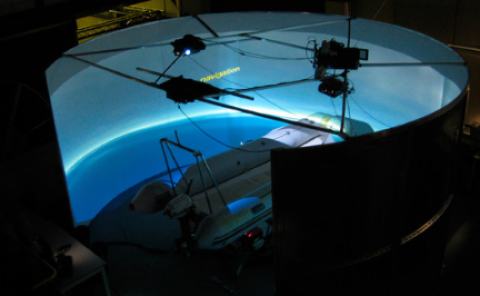Increased affect-arousal in VR can be detected from faster body motion with increased heart rate
PubDate: May 2019
Teams: École de technologie supérieure
Writers: Patrice Robitaille;Michael J. McGuffin
PDF: Increased affect-arousal in VR can be detected from faster body motion with increased heart rate

Abstract
We instrumented an immersive VR platform with physiological (heart rate and electrodermal activity) sensors to investigate the use of movement data and physiological data to automatically detect changes in affect (emotional state). 12 users were asked to complete four blocks of tasks requiring them to hit moving targets while standing and moving about. One of the four blocks (in counterbalanced order) was designed to be stressful (S), while the other blocks were designed to be calm (C). The motions required of the users were the same in both conditions; only the visual and audio feedback were different across the S and C conditions. Users’ self-scored arousal in the S condition was significantly higher. We analyzed the recorded motions by segmenting out 2747 “fast motions”, i.e., intervals of time where the sum of the speed of the hands was above a threshold. A simple machine learning algorithm (a decision tree) could learn to classify these fast motions as either calm or stressed, with ≈80% accuracy, using only two features: the maximum speed achieved during the motion, and the heart rate at the moment of maximum speed, where both features were normalized. If only the maximum speed feature is used (i.e., with no physiological data), ≈70% accuracy is achieved.


